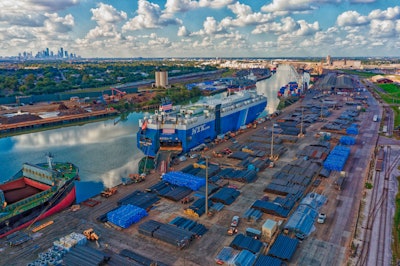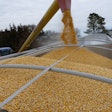
U.S. containerized grain exports saw significant growth in 2024, with shipments rising 13% from the previous year, according to the latest Grain Transportation Report released by the U.S. Department of Agriculture on March 6, 2025.
The report reveals that containerized grain shipments accounted for 10% of waterborne grain exports in 2024, totaling 15.2 million metric tons. This figure is just 2% below the peak year of 2020, signaling a robust recovery in the sector.
Distillers' dried grains with solubles (DDGS) and soybeans led the containerized grain exports, each reaching 5.1 million metric tons. DDGS exports saw a particularly strong performance, up 33% from the 2021-23 average.
"The rise in DDGS container shipments mainly reflected a 51-percent increase to South Korea," the report states, noting that most of these shipments departed from the ports of Los Angeles and Long Beach.
Despite below-average soybean production in 2024, containerized soybean exports increased by 12% from the three-year average. Indonesia emerged as a key growth market, with shipments up 75% from average, while exports to China declined by 32%.
The report also highlights significant changes in ocean carrier alliances for 2025. The dissolution of the 2M alliance between MSC and Maersk, along with the formation of new partnerships, has led to a slightly less concentrated industry structure.
"The new alliance structure may help enhance competition in the ocean industry," the report suggests.
The Ocean Alliance remains the largest player in containerized grain shipping, accounting for 49% of shipments in 2024. The newly formed Gemini Cooperation between Maersk and Hapag-Lloyd is expected to handle 10% of containerized grain shipments, based on 2024 volumes.
Industry observers will be closely watching the impact of these alliance shifts on competition, ocean vessel rates, and service reliability throughout 2025. The Gemini Cooperation's ambitious goal of achieving over 90% on-time arrivals through a hub-and-spoke model will be of particular interest, given that global liner schedule reliability stood at around 54% in December 2024.


















